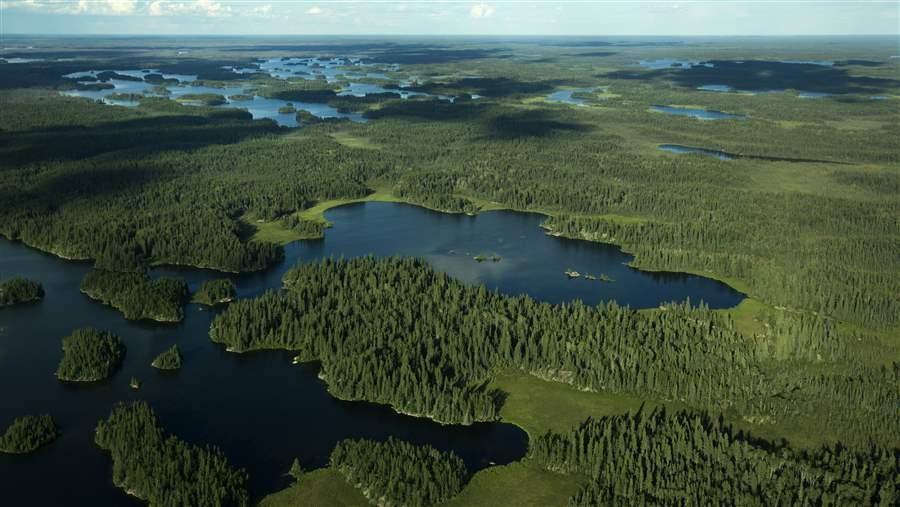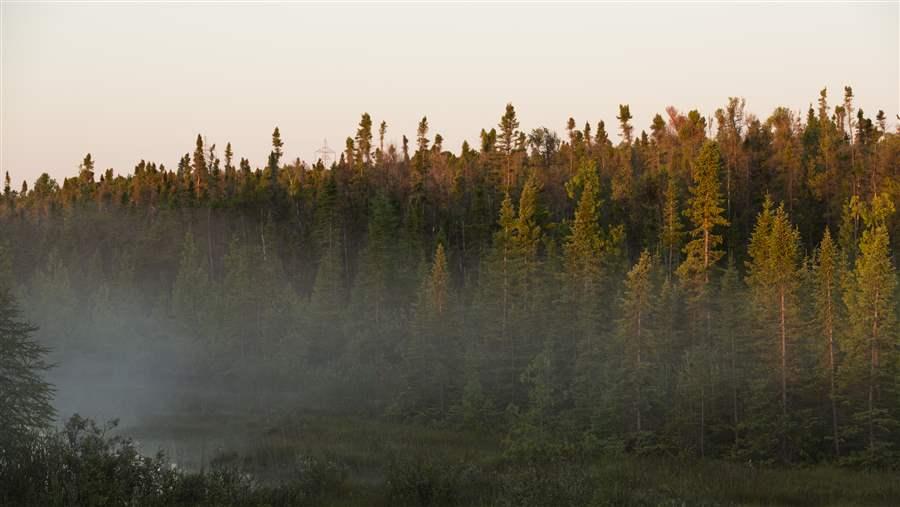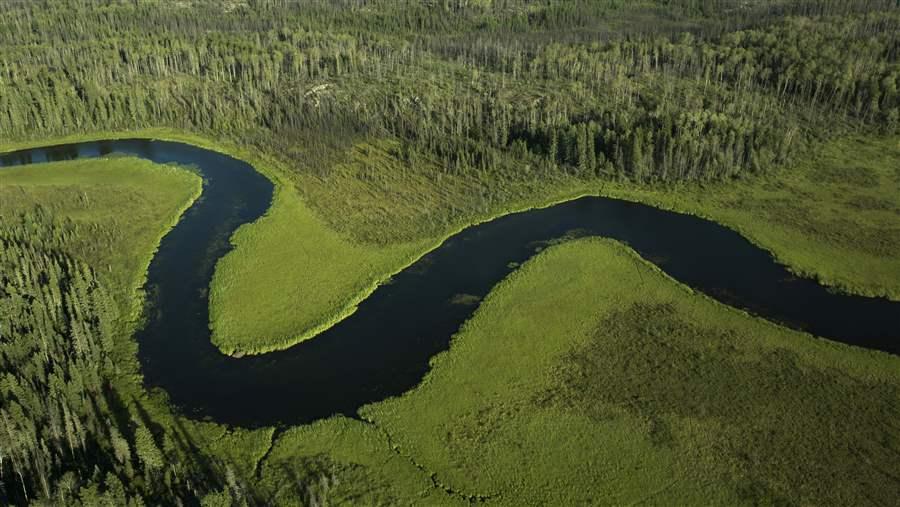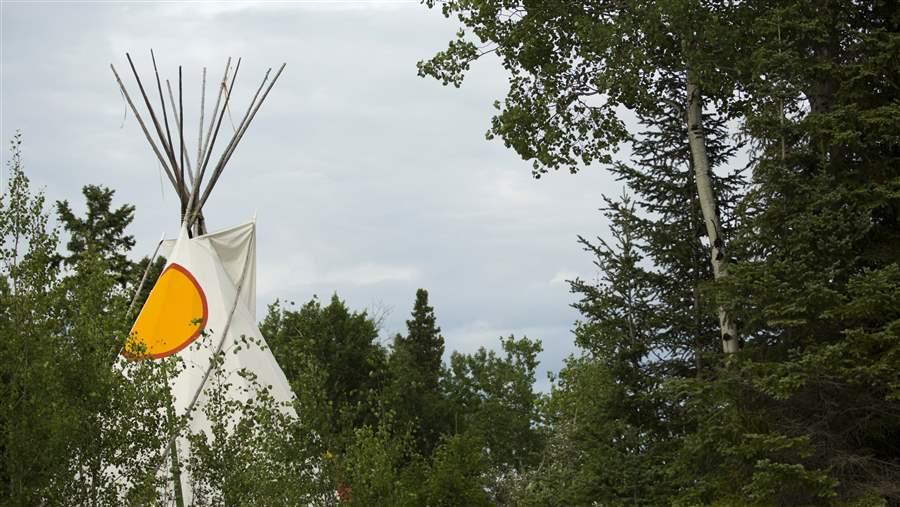Manitoba Embraces Indigenous Planning as Key to Boreal Conservation
Canadian province pledges new support for First Nations communities to develop comprehensive land-use plans on traditional territories in forest region
 Katye Martens/The Pew Charitable Trusts
Katye Martens/The Pew Charitable TrustsIndigenous people have lived in the boreal forest of Canada for millennia.
The Indigenous peoples of Canada have been “keepers of the boreal” for thousands of years, safeguarding more than 1 billion acres of pristine forest and wetlands since the retreat of the glaciers.
That large expanses of the vast boreal ecosystem remain intact and healthy—even into the present day—is due in significant part to the careful stewardship of its original inhabitants, who understood that the survival of their communities depended on the continuing health of the forest and the sustenance it provided them.
As provincial governments across Canada seek to balance environmental threats with the need to ensure prosperous communities, there is a growing recognition that First Nations people hold a key to a sustainable future for the resource-rich boreal forest.
On Nov. 16, the Canadian province of Manitoba took a critical step toward managing and protecting its 140-million-acre portion of the boreal, an area larger than Sweden, by promising to make Indigenous-led land-use planning the centerpiece of its conservation policy for the region.
 Katye Martens/The Pew Charitable Trusts
Katye Martens/The Pew Charitable TrustsThis month the Manitoba government, in its Speech from the Throne outlining major policy priorities, said:
“Our boreal forest is one of the most important ecosystems on the planet. Indigenous communities have been stewards of the boreal forest for thousands of years. We will work with indigenous communities on sustainable development, including new support for indigenous land-use planning.” The government has subsequently signaled its intent to implement those plans.
The government’s commitment is a welcome one. It opens the door to increased provincial resources for Indigenous communities that opt to develop land-use plans. They are a mechanism by which First Nations develop comprehensive frameworks for the conservation and development of their traditional territories and the preservation of their culture. Now it’s vital that Manitoba follow up on this pledge with appropriate funding to help First Nations complete this important work.
This proposed solution is good for the boreal, for Manitobans, and for the world. It can lead to an assurance of the long-term health of the ecosystem, certainty for industry and investors about land-use rules, and prosperity for local communities.
 Katye Martens/The Pew Charitable Trusts/span>
Katye Martens/The Pew Charitable Trusts/span>The boreal region in Manitoba covers 140 million acres of forest and wetlands.
Previous land-use plans by First Nations have demonstrated, time and again, a remarkable balance: They emphasize the maintenance of cultural and ecological values and the creation of opportunities for economic development. They do not exclude the potential for resource extraction but recognize that an ecosystem out of balance will not sustain a community for long.
Some examples:
- In Manitoba, the Poplar River First Nation completed a land-use plan that has more than 2 million acres—or 90 percent of its traditional territory—in conservation areas.
- The Bloodvein First Nation, also in Manitoba, developed a plan that put 590,000 acres—more than 50 percent of its traditional territory—in conservation areas.
- The Grand Council of the Cree in Quebec recently concluded an agreement that will protect 2.25 million acres of its territory in the Broadback River watershed.
- In the Northwest Territories, the Lutsel K’e Dene First Nation reached agreement with the territorial and federal governments in 2015 to co-manage 6.4 million acres of new parks and protected areas.
 Katye Martens/The Pew Charitable Trusts
Katye Martens/The Pew Charitable TrustsA traditional tipi in the boreal forest at Poplar River First Nation in Manitoba.
Manitoba has a unique opportunity to do right by its people and its environment. The boreal forest covers 80 percent of the province. More than 115 million acres of the region are still intact, providing critical habitat for such species as polar bear, wolf, moose, and the threatened woodland caribou. It includes more than 8,000 freshwater lakes, including three of the largest in the world—Lake Winnipeg, Lake Manitoba, and Lake Winnipegosis.
It is only appropriate that Indigenous people, who have so wisely managed the boreal forest in the past, will chart the path toward long-term prosperity for the region and its people.
Mathew Jacobson is an officer with The Pew Charitable Trusts’ boreal initiative.






